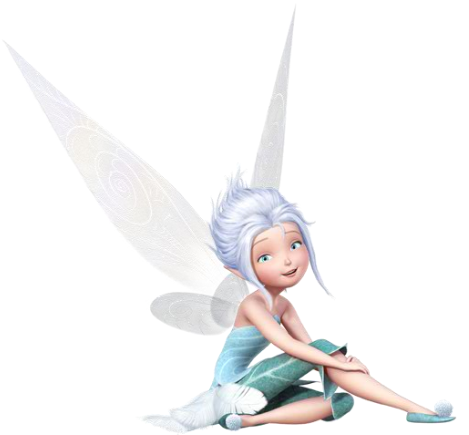
Tom Painter, a research scientist at NASA’s Jet Propulsion Laboratory in Pasadena, studies snow hydrology in mountains around the world. He’s also a leading expert on the thermodynamics of fairies and princesses.
Painter started his fairy-princess sideline a few years ago, when he was asked to lend his expertise to Tinkerbell: Secret of the Wings. In the movie—bear with me here, okay?—Tinkerbell makes a forbidden crossing into the Winter Woods, where she meets her long-lost twin sister Periwinkle, a Frost Fairy. Problem is, Tinkerbell can’t survive in the Winter Woods without a coat, which interferes with flying, and Periwinkle can’t survive outside them without a snowmaking machine that Tinkerbell and her friends fashion out of a cheese grater and a lump of ice. The snowmaking machine goes haywire and somehow creates a snowstorm all over Pixie Hollow (I didn’t catch the cause and effect there, but it made perfect sense to my five-year-old). The storm spells big trouble for the Home Tree and its all-important fairy pollen, neither of which are, shall we say, cold-tolerant.
What’s a brave pair of seasonally mismatched sister-fairies to do?
One of the Tinkerbell screenwriters, who happened to live in wine country, suggested that the fairies sprinkle the tree with water, sort of like grape-growers do before a freeze. That’d work, wouldn’t it? Painter traveled to California to meet with the filmmakers, and he gave them a PowerPoint presentation whose title he remembers as “Thermodynamics, or Why You’re Going to Kill the Fairies.” The water-on-grapes trick helps the fruit retain heat, he explained, only when there’s a relatively small temperature difference between the inside of the grape and the air outside. Given the ferocity of the cheese-grater-inspired snowstorm, the air outside the Home Tree would be much colder than the tree itself, and a thin layer of ice would just pull heat out of the tree more quickly. Frost and snow, which trap warmer air in the spaces between ice crystals, would be far better insulators. What about sending a frost fairy to the rescue, Painter asked? Frost fairies could be very, very useful.
In the final version of the film, as the fairies watch the storm advance toward the Home Tree, one suggests that they cover the tree with frost to protect it. “Frost does that!” she squeals. “It acts like a little—blanket.” The frost fairies work their insulating magic on the home tree, the storm passes over, and everyone—including the tree—survives. Tinkerbell and Periwinkle are reunited, the King and Queen of Fairy Hollow acknowledge their long-denied affections, and all the fairies give thanks to the laws of physics. Well, just kidding about that last part.
Disney called on Painter’s expertise again a few years ago, when the company was developing Frozen, a little flick you may have heard of. The creators of Frozen went to great lengths to make their animated ice and snow believable, consulting with avalanche forecasters, hydrologists, and most extensively with Caltech snowflake expert Ken Libbrecht. (The special-effects team also went to Wyoming, where they spent some time walking through deep snow in long, princess-y skirts.) Painter was asked for advice on the movie’s climax, where Anna, whose frosty sister has accidentally trapped her in a block of Anna-shaped ice, melts her way to freedom and a happy ending. Should she melt in the sun, the filmmakers asked? How about a warm breath of air? Well, said Painter, the fastest way to melt ice is to put it in contact with something warm and solid. Maybe the warmth of Anna’s heart, he said, could melt her sister’s spell. The filmmakers liked the idea, and thus an iconic scene became both emotionally and thermodynamically appropriate.
Anyone who hopes Hollywood will educate the world about science is signing up for disappointment: The Science and Entertainment Exchange, a National Academies of Sciences project that connects filmmakers with volunteer scientific advisers, gently warns prospective advisers that “sometimes the story or production needs of TV and film conflict with strict scientific accuracy.” That’s an epic understatement. But Sean Carroll, a physicist who has advised Thor, The Avengers, and other movies, points out that collaborations between science and Hollywood can head off stereotypical portrayals of scientists in movies, help keep audience belief enjoyably suspended, and even inspire cool new storylines, from frost fairies to time travel. “‘Getting it right’ is not opposed to good storytelling.” Carroll says. “It makes the story better, when properly applied.”
Painter agrees. When a fantasy world is built atop a sensical, consistent physical reality, he says, the imaginary elements are thrown into relief, creating a dramatic contrast that’s both good for the story and satisfying for the audience. So science, in a sense, helps make Hollywood magic more magical. May its wonders never cease.
Periwinkle image courtesy of Wikimedia.
2 thoughts on “Freezeproof a Fairy—With Science!”
Comments are closed.